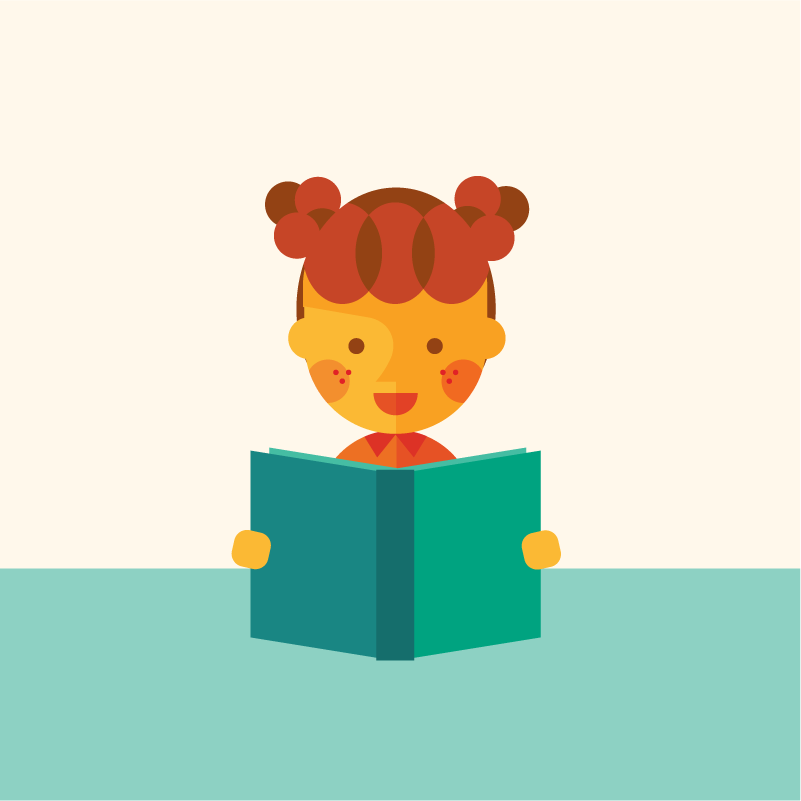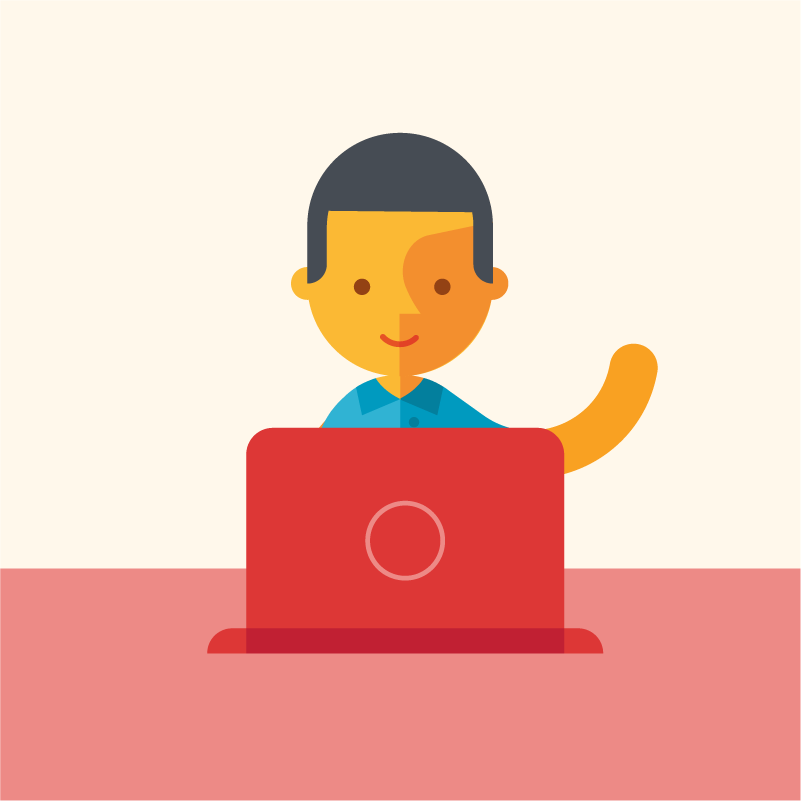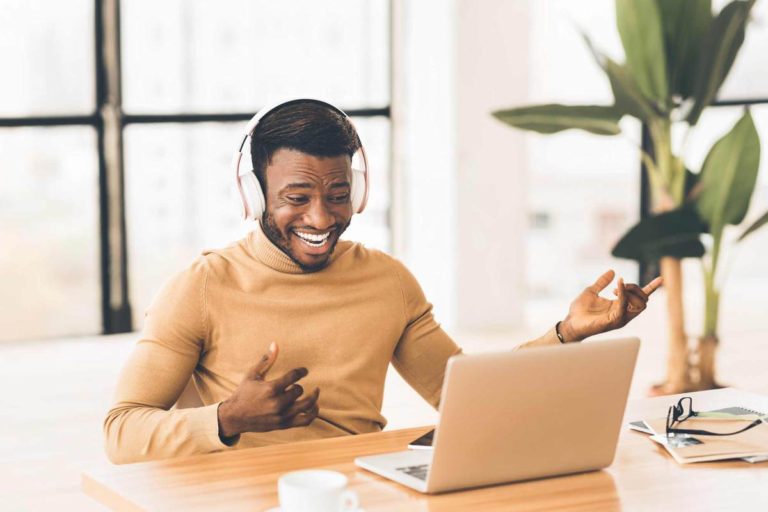Ready to start teaching English online?
Teach with VIPKidThe “flipped classroom” is a buzzword you’ve probably heard a lot, especially when it comes to online English learning. But while a lot of people say it, they don’t always explain what it means.
In this post, we’ll break down what a flipped classroom is and what teachers and students are expected to do in a flipped classroom. We’ll also list some pros and cons that are associated with it, and how we here at VIPKid implement the flipped classroom approach into our curriculum.
Let’s get into it!
What is the Flipped Classroom Approach?
Before we dive in, let’s step back a bit and examine the flipped classroom as a whole. What is it, anyway?
Well, it’s exactly what it sounds like. Take the typical class structure you know and… flip it! In a flipped classroom, students have their first exposure to a topic outside of the classroom, and then use class time to practice and work through it.
Obviously, this is in many ways the opposite of the classic practice in most traditional classrooms, where teachers introduce new topics at school and send students home with homework or projects to further their learning independently.

What Do Students Do?
Like we mentioned, students are introduced to topics for the first time on their own at home. You might think that sounds a bit confusing at first—students teaching themselves? How would that even work?
But it’s more simple than you might think. The material that is usually covered in class that takes up valuable lesson time is instead covered at home.
Students initially learn about the topic at home through:
- Watching recorded videos
- Reading introductory texts
- Completing worksheets or exercises
Students then take the information they learned on their own back to the physical or virtual classroom. Here teachers provide activities, answer questions and lead discussion to expand upon the subject and deepen understanding.
Activities at school include:
- In-person discussions and debates with their classmates or teacher
- Station learning and experiments
- Skill practice through things like worksheets, games, and class activities
- Assessments to track student progress
So students are doing many of the same activities they always have, but the setting for them has been reversed.

What Do Teachers Do?
Wait, then what’s the point of a teacher? Don’t students teach themselves?
Well, not exactly. Teachers still prepare materials for students to use at home, and still prepare activities for class time. The main difference is that the material they would normally teach in the classroom is now sent home with students, and vice-versa.
Teachers typically provide students with:
- Pre-recorded lecture material
- Reading selections for students
- Discussion platforms for students to use at home
By sending these materials home with students, teachers can now use class time for more interactive and hands-on activities. These activities include experiments, station learning, skill practice, and discussion.
Does a Flipped Classroom Work?
The short answer is yes, of course it does! We wouldn’t implement a flipped classroom into our curriculum for the last 8 years if it didn’t.
Students can move at their own pace and focus on what they need to work on, allowing teachers to spend more time on areas of difficulty, and class time is much more interactive.

Flipped Classroom Pros and Cons
But like any teaching style, the flipped classroom model is not a perfect system and it’s up to teachers to weigh the drawbacks and benefits. Let’s look at some of the pros and cons of the flipped classroom approach.
The Pros:
Students have more control over their learning.
If students in a flipped classroom don’t do the work at home, they won’t be able to keep up with the class or participate in class time activities. This motivates students to take more control over their learning and teaches them responsibility.
Class time is spent in more productive ways.
Students learn better when they’re interested. In a classroom setting, do you think they’ll be more interested in listening to a teacher’s lecture or doing experiments and activities? The answer, obviously, is the latter.
If you play your cards right, students won’t even realize they’re learning through your classroom activities!
The flipped classroom approach allows students who miss classes to keep up.
Since lectures and reading materials are done from home, students will always get at least an introduction to every topic, whether they’re able to be in the classroom or not.
The Cons:
The flipped classroom typically requires students to have access to adequate technology.
This is possibly the largest critique of the flipped classroom. And it’s valid—students can’t watch videos or participate in online discussions if they don’t have access to a laptop or high-speed internet.
There have been several conversations about how to combat this, from ideas providing all students with laptops, to broader solutions like cities offering affordable wi-fi as a utility like electricity or gas.
In the meantime, we expect teachers to keep offering creative solutions like printing hard copies of reading materials and burning DVDs of recorded lectures for students who might lack adequate technology. (Side note, don’t teachers rock?)
Not all language learning styles respond well to a flipped classroom.
Not all students learn the same way, and that’s due to their preference in language learning style.
For example, a student who is an auditory learner might not get the same amount of knowledge out of a reading assignment at home. Conversely, visual learners will have less success learning through recorded lectures.
The solution for teachers? Mix up your at-home assignments for students! A healthy blend of materials will ensure that no student gets left behind, regardless of their learning style. It could also be a good idea to ask students what they prefer for their take-home work—it will show you as a teacher care about how they learn!

How VIPKid’s Flipped Classroom Works
Not all flipped classrooms are created equal. Just like more traditional classroom approaches, there are a number of ways the flipped classroom can be implemented.
So, how does VIPKid’s flipped classroom work? Well to start, we only recruit experienced, educated teachers who can make it happen remotely. All of our classes are one-on-one to allow our teachers to give their full attention to each student during class time.
After their online English lesson, students are given a variety of materials to review on their own, before the class starts. During the class, material is reinforced through fun activities and games that keep students engaged.
When the lesson is over, students get their next at-home assignment, and the cycle repeats! It’s a proven curriculum that’s served us well over the last 8 years, with over 200 million classes taught.
Want to see for yourself? Sign up for VIPKid today to start learning English online.
Have more questions about the flipped classroom? Our amazing community of teachers are always helping each other out. Join the official VIPKid Teacher Network to connect with other experienced online English teachers around the world.



